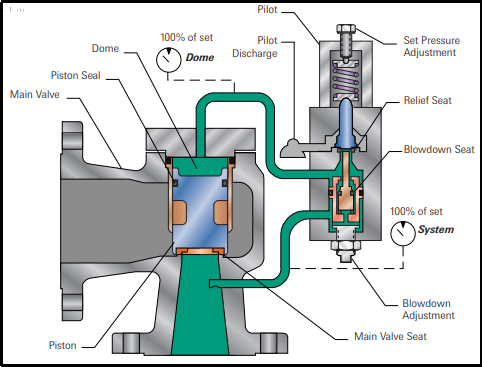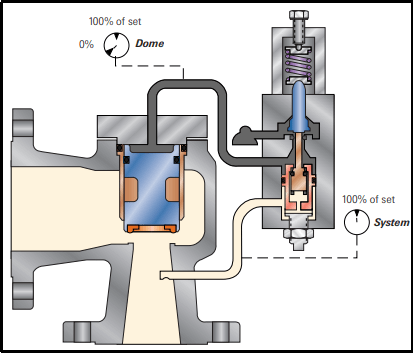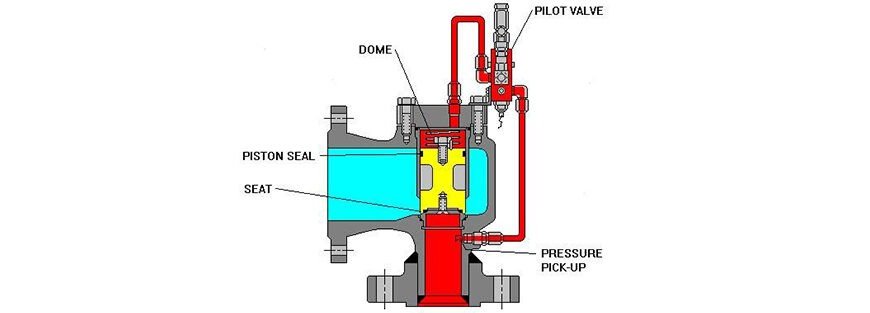
What is POSRV (Operated Safety Relief Valve)?
A POSRV relieves an overpressure situation by actuating a valve that is plumbed to the main valve. The valve opens and closes the main valve in response to system pressure and all of the relieving capacity flows through the main valve.
How does POSRV work?
In fig.1 above, the pressure is supplied from the Inlet side (the system being protected) to the dome by a small tube through the actual control valve. The outlet side is then piped to Flare where the PORV directs its exhaust. The outlet pipe is typically larger than the inlet. The area of the piston on which fluid force is acting is larger in the dome than it is on the upstream side; the result is a larger force on the dome side than the upstream side and produces a net sealing/closing force. Snap acting At set pressure the valve snaps to full lift. This can be quite violent on large pipes with significant pressure. The pressure has to drop below the set pressure in for the piston to reseat Modulating The is designed to open gradually so that less of the system fluid is lost during each relief event. The piston lifts in proportion to the overpressure. Blowdown is typically short.
Fig.2 below shows POSRV in closed position & Fig.3 in Open Position


- Seals in accordance with API 2000 requirements for Operated Relief Valves
- It is fully open at 10% above the set pressure



